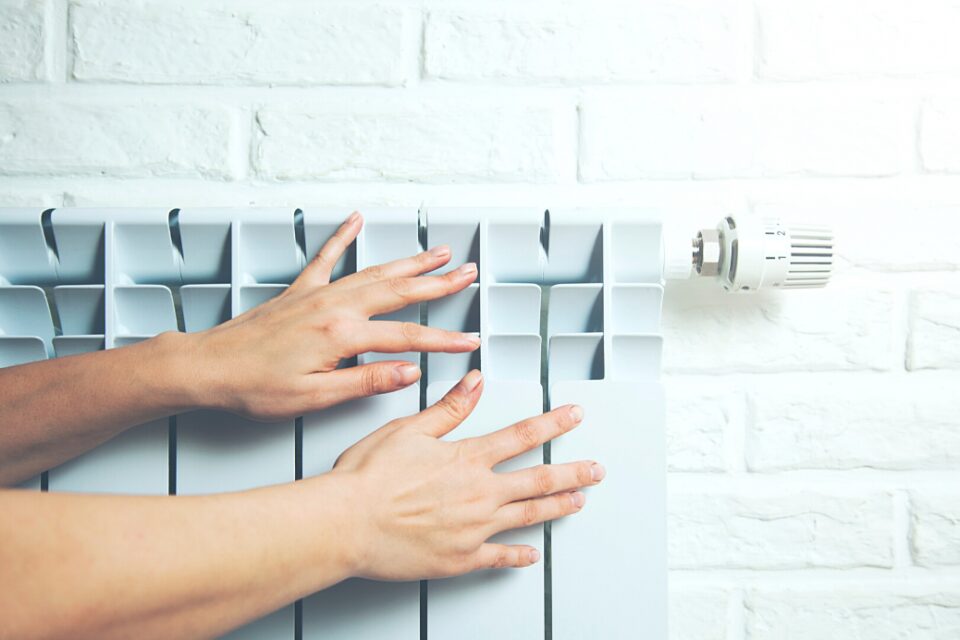If heating was a new technology and you were tasked with designing a system and components you would start by looking at what customers expect and want from the heating system. In the absence of finding much agreement you would probably settle on a common denominator: comfort. After all that’s why we have heating systems.
From that point you would have to start thinking about how to do that and we would probably all agree on 20C as a comfortable room temperature. You would also add that that temperature should be maintained with minimal deviation, as room temperature swings create discomfort. To avoid that you would enable the system to respond to temperature fluctuations by allowing the pump to run with variable temperature as long as there was a need for heat in the building.
So with that consensus you would work, looking at what causes a deviation from that temperature in a property. The first challenge you would find would be the outside temperature and the weather. Accommodating for that is fairly straight forward – just vary the radiator temperature. The colder it is outside, the warmer the radiators. As temperatures drop outside quicker than inside, you could put more heat into the building before it left, with the net effect that overall average radiator temperature could be lower, enhancing efficiency at the heat pump.
Another common area we could agree upon would be the need for time windows of heating. Not every building needs to be at target temperature 24/7. So we would have periods when expected room temperature could be dropped. Obviously we would observe that turning the heating off would lead to a drop off in indoor temperature, and as the temperature of the radiators is determined by the outdoor temperature, a heat up time would be variable and unpredictable, depending on multiple factors.
Turning heating systems off creates standing losses, that is heat in pipes that is surplus to requirement, lifting room temperature unnecessarily, and then turning them on creates a delay in raising room temperature as pipes and radiators have to heat up delaying the heat up time to target room temperature. By avoiding turning off the heating system you eliminate both standing losses and a rapid heat up, while delivering stable room temperatures with a lower flow temperature.
Of course we would add an indoor room sensor, the heat pump controller, to measure the actual temperature indoors and this information would get passed to the heat pump so that it could deliver the heat required to maintain room temperature. As the indoor temperature rises so the flow temperature would drop as rooms warm up.
The room sensor constantly monitors the rate of change of the room temperature and micro adjusts the flow temperature to deliver stability of room temperature. Thus, a building which looses heat slowly will need less heat to be put into it to recover the 20C we have all agreed upon, than one that looses it quickly.
This rate of heat loss is determined by the thermal mass of the building, or its ability to retain heat due to the insulation, or resistance to heat loss. Thermal mass is found in the building fabric, which is stored heat in the walls, floors and ceilings, and the furniture in the building. A building with a high thermal mass takes longer to loose heat than one with a low thermal mass. And this is detected by the room sensor which asks for a lower flow temperature at time phase change.
An unintended but welcome by-product of aiming for stability of room temperature is that the fabric of the building acting as a heat store is also at target room temperature (say 20C) and this plays a part in heating the system. If the room air temperature drops the fabric provides heat as well as the radiators to establish an equilibrium and achieve stability of room temperature.
As the flow temperature heads down, heat pumps become progressively more efficient with these controls..So why turn the heat pump off at all? A heat pump in particular delivering a low amount of heat will be more efficient. The same is true with boilers.
This is where set back, or our off period comes in. We turn off to avoid excessive energy usage, but to maximise efficiency we stop things getting too cold. And as the flow temperature is lower in set back the heat pump is more efficient.
Heat pumps in severe winters are best kept with high set back temperatures or even all day at target room temperature as in this scenario. Keeping a building at a stable temperature puts the heat pump into a low heat demand situation, just as the heat pump is most challenged because of the cold.


